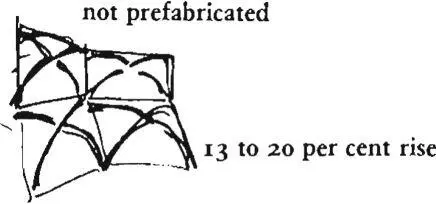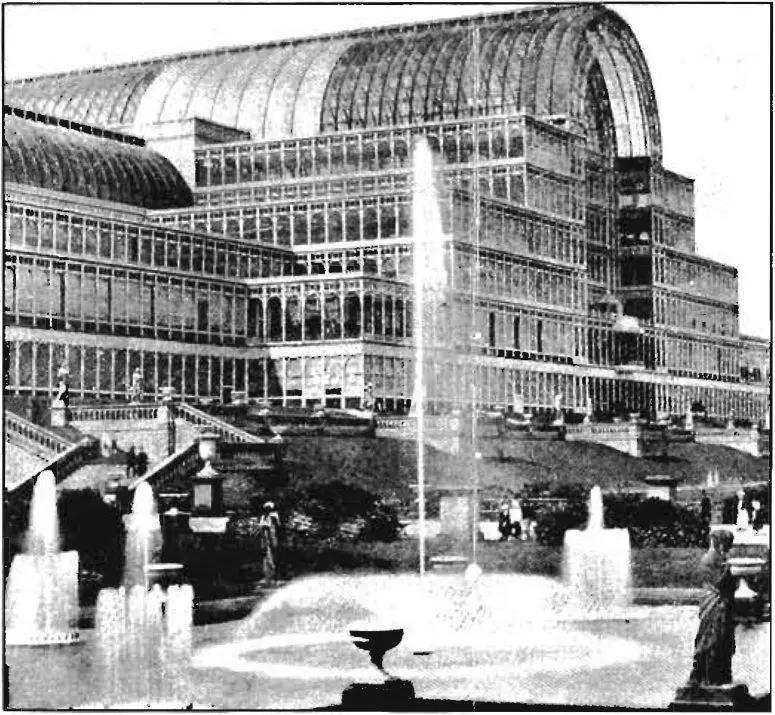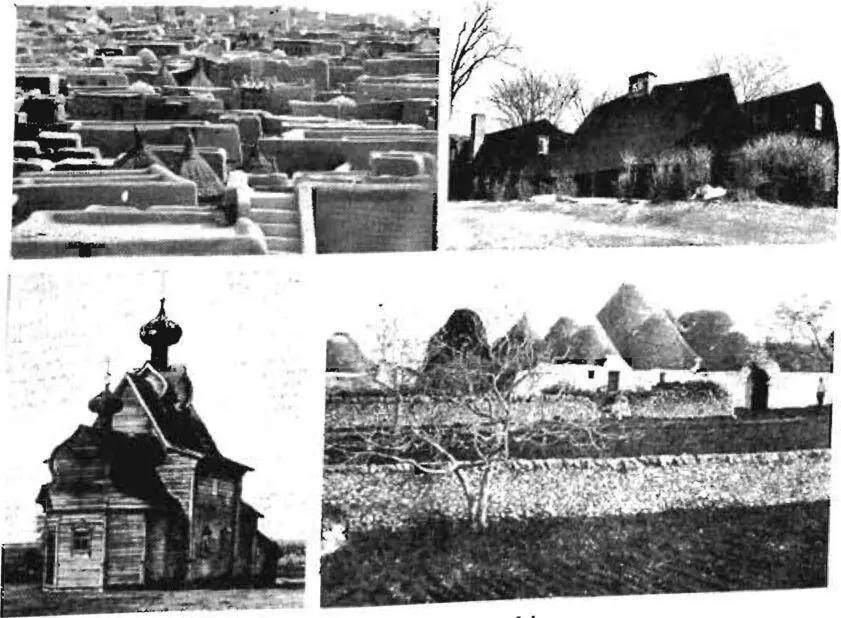Christopher alexander - A pattern language
Здесь есть возможность читать онлайн «Christopher alexander - A pattern language» весь текст электронной книги совершенно бесплатно (целиком полную версию без сокращений). В некоторых случаях можно слушать аудио, скачать через торрент в формате fb2 и присутствует краткое содержание. Жанр: Прочая научная литература, на английском языке. Описание произведения, (предисловие) а так же отзывы посетителей доступны на портале библиотеки ЛибКат.
- Название:A pattern language
- Автор:
- Жанр:
- Год:неизвестен
- ISBN:нет данных
- Рейтинг книги:3 / 5. Голосов: 1
-
Избранное:Добавить в избранное
- Отзывы:
-
Ваша оценка:
- 60
- 1
- 2
- 3
- 4
- 5
A pattern language: краткое содержание, описание и аннотация
Предлагаем к чтению аннотацию, описание, краткое содержание или предисловие (зависит от того, что написал сам автор книги «A pattern language»). Если вы не нашли необходимую информацию о книге — напишите в комментариях, мы постараемся отыскать её.
A pattern language — читать онлайн бесплатно полную книгу (весь текст) целиком
Ниже представлен текст книги, разбитый по страницам. Система сохранения места последней прочитанной страницы, позволяет с удобством читать онлайн бесплатно книгу «A pattern language», без необходимости каждый раз заново искать на чём Вы остановились. Поставьте закладку, и сможете в любой момент перейти на страницу, на которой закончили чтение.
Интервал:
Закладка:
beer cans, wine jugs, sono tubes, ducts, chunks of polyurethane. Or voids can be made very much like the vaults themselves by making arches with latticing between columns and then stretching burlap from these arches to the dome. The drawing opposite shows the sequence of construction.
A 16 by 20 foot vault similar to the one shown in our photographs has been analyzed by a computerized finite element analysis. The concrete was assumed to be 40 pounds perlite, with a

CONSTRUCTION
test compressive strength of 600 psi. Tensile strength is taken as 34 psi, and bending as 25.5 inch pounds per inch. These figures are based on the assumption that the concrete is unreinforced. Dead loads were figured at 60 pounds per square foot assuming 50 per cent voids in the spandrels of the vault. Live loads were taken to be 30 pounds per square foot.
According to the analysis, under such loading the largest compressive stress in this dome occurs near the base at mid points of all four sides and is 120 psi. Outward thrust is the greatest at quarter points along all four walls, and is 1769 pounds. The maximum tension of 32 psi occurs at the corners. Maximum bending is 10 inch pounds per inch. All of these are well within the capacity of the vault, and besides, shrinkage reinforcement in the vault will make it even stronger.
The analysis show's, then, that even though the vault is an impure form (it contains square panels which are actually sagging within the overall configuration of the vault shape), its structural behavior is still close enough to that of a pure vault to work essentially as a compression structure. There are small amounts of local bending; and the corner positions of the dome suffer small amounts of tension, but the chickenwire needed for shrinkage will take care of both these stresses.
Here are some other possible ways of building such a vault:
To begin with, instead of W'ood for the lattice work, many other materials can be used: plastic strips, thin metal tubes, bamboos. Other resins besides polyester resins can be used to stiffen the burlap. If resins are unavailable, then the form for the vault can be made by placing lattice strips as described, and then stretching chickenwire over it, then burlap soaked in mortar which is allowed to harden before concrete is placed. It might also be possible to use matting stiffened with glue, perhaps even papier mache.
It is possible that similar vaults could be formed by altogether different means: perhaps with pneumatic membranes or balloons. And it is of course possible to form vaults by using very traditional methods: bricks or stones, on centering, like the beautiful vaults used in renaissance churches, gothic cathedrals, and so on.
219 FLOOR-CEILING VAULTS
Therefore:
Build floors and ceilings in the form of elliptical vaults which rise between 13 and 20 per cent of the shorter span. Use a type of construction which makes it possible to fit the vault to any shaped room after the walls and columns are in position: on no account use a prefabricated vault.
 |
| ♦J* |
When the main vault is finished, mark the positions of all those columns which will be placed on the floor above it—final column distribution (213). Whenever there are columns which are more than 2 feet away from the perimeter beam, strengthen the vault with ribs and extra reinforcing to withstand the vertical forces.
Put all the upper columns in position before you pour the floor of the vault, so that when you pour it, the concrete will pour around the column feet, and anchor them firmly in the same way that they are anchored in the foundations—root foundations (214).
To finish the under surface of the vault paint it or plaster it— soft inside walls (235). As for the floor surface above, either wax it and polish it or cover it with soft materials—floor surface (233). . . .
1035
. . . superimposed over the mosaic of subcultures (8), there is a need for a still larger cellular structure: the local transport areas. These areas, 1—2 miles across, not only help to form subcultures, by creating natural boundaries in the city, but they can also help to generate the individual city fingers in the city country fingers (3), and they can help to circumscribe each downtown area too, as a special self-contained area of local transportation-MAGIC OF THE CITY (lO).
*
Cars give people wonderful freedom and increase their opportunities. But they also destroy the environment, to an extent so drastic that they kill all social life.
The value and power of the car have proved so great that it seems impossible to imagine a future without some form of private, high-speed vehicle. Who will willingly give up the degree of freedom provided by cars? At the same time, it is undeniably true that cars turn towns to mincemeat. Somehow local areas must be saved from the pressure of cars or their future equivalents.
It is possible to solve the problem as soon as we make a distinction between short trips and long trips. Cars are not very good for short trips inside a town, and it is on these trips that they do their greatest damage. But they are good for fairly long trips, where they cause less damage. The problem will be solved if towns are divided up into areas about one mile across, with the idea that cars may be used for trips which leave these areas, but that other, slower forms of transportation will be used for all trips inside these areas—foot, bike, horse, taxi. All it needs, physically, is a street pattern that discourages people from using private cars for trips within these areas, and encourages the use of walking, bikes, horses, and taxis instead—but allows the use of cars for trips which leave the area.
Let us start with a list of the obvious social problems created by the car:
Air pollution
| 2 20 ROOF VAULTS* |
|---|
 |
IO36
. . . if the roof is a flat roof garden (118), it can be built just like any floor-ceiling vault (219). But when it is a sloping roof, according to the character of sheltering roof (1 17), it needs a new construction, specifically adapted to the shape which can enclose a volume.
• 5* * 5* * 5*
What is the best shape for a roof?
 |
| All over the world. |
1037
For some reason, this is the most loaded, the most emotional question, that can be asked about building construction. In all our investigations of patterns, we have not found any other pattern which generates so much discussion, so much disagreement, and so much emotion. Early childhood images play a vital role; so does cultural prejudice. It is hard to imagine an Arab building with a pitched roof; hard to imagine a New England farmhouse with a Russian onion roof over a tower; hard to imagine a person who has grown up among pitched steep wooden roofs, happy under the stone cones of the trulli.
CONSTRUCTION
Читать дальшеИнтервал:
Закладка:
Похожие книги на «A pattern language»
Представляем Вашему вниманию похожие книги на «A pattern language» списком для выбора. Мы отобрали схожую по названию и смыслу литературу в надежде предоставить читателям больше вариантов отыскать новые, интересные, ещё непрочитанные произведения.
Обсуждение, отзывы о книге «A pattern language» и просто собственные мнения читателей. Оставьте ваши комментарии, напишите, что Вы думаете о произведении, его смысле или главных героях. Укажите что конкретно понравилось, а что нет, и почему Вы так считаете.












